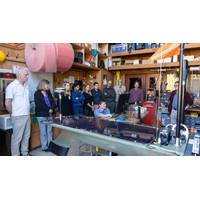
Sonardyne Holds Seabed Deformation Technical Workshop
community in the USA and Canada to share insights, experiences and how its GNSS-A and AZA instruments can be further improved to meet future needs.These included; Ocean Networks Canada, U.S. Geological Survey (USGS), Georgia Institute of Technology, Woods Hole Oceanographic Institution and the University of Washington, as well as our hosts Scripps Institution of Oceanography in California. As well as providing the stunning backdrop for this event, Scripps Institution of Oceanography furnished instruments for the workshop from the large pool of our equipment.GNSS-A and AZA are two independent technologies
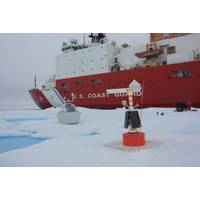
US Coast Guard Cutter Healy, Scientists Deploy Ice Stations
. Science instruments like the WIMBO are individual components of a greater project, the Arctic Mobile Observing System (AMOS), a network of robotic oceanographic instruments making years-long autonomous observations of ocean and sea ice physics.The science party, headed by Dr. Craig Lee of the University of Washington’s Applied Physics Laboratory is comprised of the foremost leaders in the field of oceanographic science.“The ONR AMOS program focuses on developing technologies for making continuous, long-term scientific observations of the Arctic marine environment,” said Lee. &ldquo

Subsea Infrastructure Power Looks at Renewables
geometry, which will include solar panels and a novel direct-drive generator, with trials and rollout targeted for 2024-25.**SeaRAY is configurable from 750W to 25kW. C-Power also has a StingRAY design, for utility-scale power, and TigerRAY, a “next generation SeaRAY”, built for the University of Washington Applied Physics Lab to conduct a U.S. Navy sponsored project to investigate at-sea charging of unmanned underwater vehicles
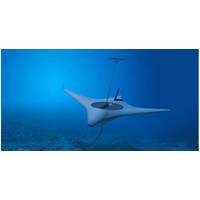
Back to the Future: Blended Wing Gliders Could Redefine Undersea Warfare
magazine article, the underwater glider has become a mainstay of ocean scientific research. The Teledyne Marine Slocum glider(named for Joshua Slocum, the first to solo circumnavigate the globe in a sailboat),along with its cousins the Kongsberg SeaGlider, originally developed by the University of Washington, and Spray Glider, jointly developed by Woods Hole and Scripps Institute of Oceanography, have been at the forefront of the marine robotics revolution. Gliders are unique among autonomous underwater vehicles (AUVs). Rather than use thrusters or propellers for propulsion, they rely on changes
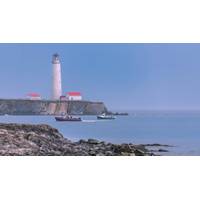
How the Blue Economy Will Shape the Future of Canada’s Oceans
.The authorsAndrés M. Cisneros-Montemayor, Assistant Professor, Resource & Environmental Management, Simon Fraser UniversityLeah M. Fusco, Postdoctoral researcher, Department of Geography, Memorial University of NewfoundlandMarleen Simone Schutter, Postdoctoral Research Fellow, University of Washington(Source: The Conversation
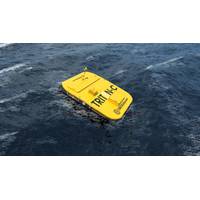
US DoE Funds Marine Energy Projects
involves developing and demonstrating modular optical camera systems, imaging sonar software, an instrument integration hub, and an automated, cloud-based data management system to create lower-cost instrumentation and user-friendly environmental monitoring tools. These tools are based on the University of Washington’s Adaptable Monitoring Package, which has been tailored for long-term monitoring at marine energy sites.Subseasail, California, is working on ASGUARD, an "Advanced Sea Going and Underwater Autonomous Research Device". In this project, the team will continue developing ASGUARD
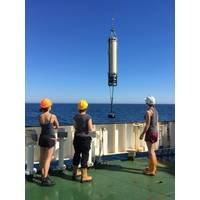
NOC-led Study Paves the Way for Future Climate Models
(NOC) has led a study to investigate gaps in knowledge of the biological carbon pump, in the hope of prioritizing which aspects should be included in future climate model developments, and the observations necessary to achieve that. The study, which was carried out with the Imperial College, University of Washington, University of Bern and Boston College is aiming to pave the way for more accurate modelling of future ocean carbon storage.Climate models aim to inform us about how the world will respond to climate change caused by increasing carbon dioxide in the atmosphere. A critical part of the Earth&rsquo
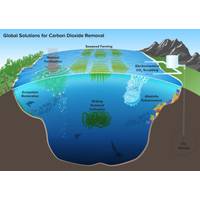
Carbon Dioxide Removal (CDR) ... To Clear the Air, Look Beneath the Waves
ocean. These technological advances are essential to assessing the state of the current ocean carbon cycle and to see what impacts there might be if we deliberately tried to enhance carbon storage.”A tidewater glacier in Prince William Sound. ClimateWorks recently awarded a grant to the University of Washington School of Oceanography, United States Geological Survey Alaska Science Center and the Prince William Sound Science Center to measure the rate of alkalinity addition from mineral weathering and the link between alkalinity addition and atmospheric CO2 removal. © Rob Campbell, Prince William
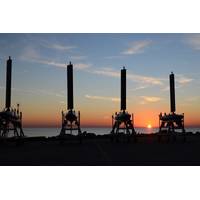
Autonomy: Sun, Sail & Subsea – Not a Holiday, but a Hybrid UxV Platform
or detection, targeting the scientific community. In 2018, true to this goal, the first Submaran (it’s initial name) mission saw it sampling seawater for harmful algal bloom (HAB) cells and toxins off Washington, as part of a pilot project. In 2020, this led to a full project, with the University of Washington’s Applied Physics Laboratory and other partners using National Oceanic and Atmospheric Administration funding to improve early detection and modelling of these potentially harmful cells and toxins, reaching offshore areas using an autonomous vehicle in weather conditions too extreme



 February 2024
February 2024





